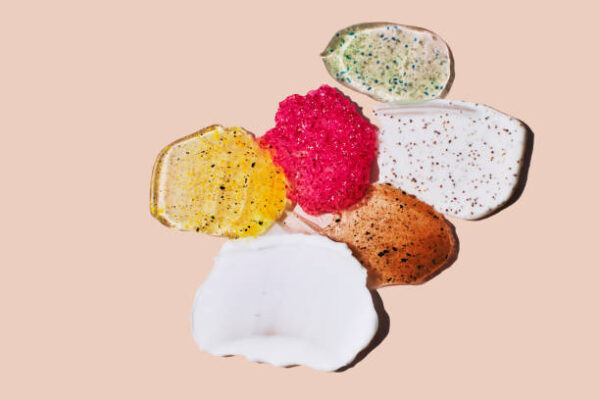Exfoliation is one of those skincare steps that can completely change how your skin looks and feels, but only if you do it correctly. The big question most people have is how often to exfoliate skin without causing irritation. Exfoliating too much can strip away the protective barrier, leaving you with redness, dryness, or breakouts. Skip it altogether, and dead skin cells build up, leading to dullness, clogged pores, and uneven skin texture.
Finding the right balance is key. The ideal frequency depends on your skin type, age, and the type of exfoliator you use—whether that’s a gentle exfoliator, a chemical exfoliant like glycolic or salicylic acid, or a physical exfoliant such as a face scrub. Done properly, exfoliation reveals brighter skin, smooths fine lines, and even helps with blackheads and hyperpigmentation. In this guide, we’ll break down everything you need to know about exfoliation frequency, step by step.
What Does Exfoliation Do for Your Skin?
Your skin naturally sheds dead cells every few weeks, but sometimes that process slows down. When old cells linger on the surface, your face can look dull, rough, or uneven. That’s where exfoliation steps in. By using a gentle exfoliator, whether it’s a chemical exfoliant like glycolic acid or a mild exfoliating scrub, you’re helping the skin renew itself more efficiently.
Regular exfoliation unclogs pores and reduces the chance of blackheads or breakouts. It also smooths uneven skin texture and can gradually fade issues like hyperpigmentation or post-acne marks. This is why dermatologists often recommend exfoliation as part of a well-rounded anti-aging skin care routine. Removing the top layer of dead cells makes it easier for moisturizers, serums, and treatments to penetrate and actually work.
Of course, benefits depend on how often to exfoliate skin and the method you choose. Using a salicylic acid formula too often, for example, may trigger dryness, while skipping exfoliation entirely can leave skin looking lifeless. The right frequency ensures your complexion stays smooth, radiant, and healthy without compromising its protective barrier.
How Often to Exfoliate Skin — The Complete Breakdown
One of the most common skincare questions is how often to exfoliate skin, and the answer isn’t the same for everyone. Frequency depends on your skin type, the strength of the product, and whether you’re using a chemical exfoliant or a physical exfoliant. The goal is to remove dead skin cells without disrupting your skin’s natural barrier.
Sensitive or dry skin: If your skin feels tight, flaky, or reacts easily, stick to once a week. Choose mild options like a gentle exfoliator with lactic acid or an enzyme exfoliator made with fruit enzymes such as papaya. These help polish the skin without causing irritation.
Oily or acne-prone skin: Excess oil and clogged pores usually need more attention. In this case, you can exfoliate 2–3 times per week with a salicylic acid (BHA) product. It penetrates deep into pores to reduce breakouts and blackheads.
Normal or combination skin: A middle ground works best—1 to 2 times per week with either a low-strength glycolic acid or a mild scrub. If you enjoy the feel of a face scrub, keep it gentle and avoid gritty, abrasive particles.
Mature skin: As we age, cell turnover slows, which means exfoliation can be especially beneficial. A glycolic acid peel once or twice weekly helps soften fine lines, improve skin texture, and brighten dullness.
Professional treatments: Options like microdermabrasion or stronger chemical peels should only be done every few weeks under expert guidance.
The key is listening to your skin. If you’re unsure how often to exfoliate skin, start slow and increase frequency only if your skin tolerates it well. Over-exfoliation often shows up as redness, stinging, or excessive dryness, while under-exfoliation leaves skin looking uneven and lifeless. Finding your personal balance is what makes exfoliation effective and safe.
Types of Exfoliators and Their Role in Frequency
When deciding how often to exfoliate skin, the type of exfoliator you use makes all the difference. Each method works in a unique way, which is why their recommended frequency isn’t the same.
Chemical exfoliants (AHA, BHA, PHA): These use acids to dissolve the bonds between dead skin cells. Popular ingredients include glycolic acid, lactic acid, and salicylic acid. AHA formulas like glycolic and lactic acid are best for smoothing skin texture and brightening dullness, while salicylic acid targets clogged pores and acne. Depending on strength, most chemical exfoliants can be used 1–3 times weekly. Gentle PHA products may be tolerated more often.
Physical exfoliants (scrubs and tools): These rely on particles or textures to manually remove dead cells. A classic example is an exfoliating scrub or devices like brushes. While satisfying, physical exfoliants should be used less often—generally once a week—because overuse can cause microtears or irritation. If you prefer a scrub, choose a gentle exfoliator with fine, smooth particles rather than harsh abrasives.
Enzyme exfoliators: Derived from fruits such as papaya or pineapple, these naturally digest dead cells without acids or scrubbing. An enzyme exfoliator is a great choice for sensitive or reactive skin types. Because they’re mild, they can usually be used more frequently, about 2–3 times per week.
Professional options (peels and microdermabrasion): Stronger treatments deliver dramatic results but should be spaced out—typically every 4–6 weeks under a professional’s guidance.
Ultimately, understanding which type you’re using helps determine how often to exfoliate skin safely. Choosing the right exfoliator for your skin type ensures you reap the benefits without compromising your barrier.
Key Benefits of Regular Exfoliation
When you understand how often to exfoliate skin for your type, the payoff is noticeable. Exfoliation does far more than just smooth the surface—it improves skin health over time.
One of the biggest advantages is the improvement in skin texture. By clearing away dead cells, exfoliation leaves your complexion softer and more even. It also unclogs pores, which helps reduce blackheads and breakouts, especially when using a salicylic acid exfoliant. For those struggling with hyperpigmentation or uneven tone, glycolic acid and lactic acid are particularly effective, gently fading dark spots and brightening overall radiance.
Exfoliation is also a powerful part of anti-aging skin care. Regular use of a gentle exfoliator encourages faster cell turnover, which can soften the look of fine lines and improve firmness. By removing the buildup of dead skin, serums and moisturizers penetrate more effectively, maximizing their benefits.
When done consistently but not excessively, exfoliation supports a clearer, brighter, and more youthful-looking complexion. The key is balance: finding how often to exfoliate skin without overdoing it ensures these benefits last long-term.
Safe Step-by-Step Exfoliation Routine
Knowing how often to exfoliate skin is only half the equation—you also need to do it safely. A structured routine keeps irritation at bay while maximizing results.
Step 1: Cleanse first. Start with a mild cleanser to remove dirt and oil. This ensures your exfoliator can work directly on the skin’s surface.
Step 2: Apply your exfoliator.
If using a chemical exfoliant like glycolic acid or salicylic acid, apply a thin, even layer to clean, dry skin.
For a physical exfoliant such as a mild exfoliating scrub, massage gently with light pressure—never scrub harshly.
With an enzyme exfoliator, allow it to sit briefly before rinsing.
Step 3: Rinse and rebalance. Chemical exfoliants often don’t require rinsing, but scrubs and enzyme products should be thoroughly washed off with lukewarm water.
Step 4: Hydrate and protect. Always follow with a nourishing moisturizer. During the day, apply SPF, since exfoliation increases sun sensitivity.
Step 5: Adjust frequency. Even with the right products, pay attention to how often you exfoliate. For most people, 1–3 times per week is enough. Some gentle exfoliator formulas are designed for daily use, while stronger peels or an overnight exfoliating treatment should be limited to once weekly.
Signs you’re overdoing it—stinging, redness, or excessive dryness—mean you need to cut back. In short, the safest approach is to start slow, then adjust how often to exfoliate skin based on your tolerance.
Exfoliating Ingredients and Frequency Guidelines
The type of exfoliating ingredient you choose plays a huge role in deciding how often to exfoliate skin. Different actives vary in strength, and knowing what they do helps prevent overuse.
Glycolic acid (AHA): This is one of the most effective ingredients for improving skin texture and fading hyperpigmentation. Because it’s potent, most people should limit glycolic acid use to once or twice a week.
Lactic acid (AHA): Gentler than glycolic acid, lactic acid not only exfoliates but also hydrates. A gentle exfoliator with lactic acid can usually be used up to three times weekly, making it suitable for sensitive or dry skin.
Salicylic acid (BHA): This oil-soluble ingredient penetrates deep into pores, reducing blackheads and breakouts. If you have oily or acne-prone skin, exfoliate 2–3 times weekly with salicylic acid.
Enzyme exfoliators: Made from natural fruit enzymes like papaya or pineapple, these dissolve dead skin without acids or scrubbing. They’re mild enough for 2–3 uses per week.
Top Recommended Face Exfoliators by Skin Concern
Not every exfoliator is one-size-fits-all. The right product depends on your skin’s unique needs, as well as how often to exfoliate skin without irritation. Here are dermatologist-approved picks tailored by concern:
For acne-prone skin: Look for a salicylic acid exfoliator. Because it penetrates deep into pores, it helps dissolve oil buildup and prevent blackheads. Use 2–3 times weekly, adjusting based on your skin’s response.
For dull or uneven skin tone: Glycolic acid is a go-to for brightening. It gently removes the buildup of dead cells, revealing a fresher glow. Stronger formulas may only be needed once weekly, while lighter versions can be used twice weekly.
For sensitive or dry skin: A lactic acid exfoliator or an enzyme exfoliator is ideal. Both work more gently while also providing hydration. A mild gentle exfoliator can usually be used 2–3 times a week without over-stripping.
For anti-aging skin care: A chemical peel with AHAs like glycolic or mandelic acid helps improve fine lines, roughness, and uneven tone. Since these are stronger, once a week is generally enough.
For quick refresh: If you prefer a tactile option, choose a mild exfoliating scrub with rounded beads, not harsh grains. Use sparingly, about once weekly, to avoid microtears in the skin.
The secret to success lies in consistency and balance. Matching the product to your concern—and adjusting how often to exfoliate skin—ensures you see results without compromising your skin barrier.
Common Exfoliation Mistakes to Avoid
Even if you know how often to exfoliate skin, missteps in technique or product choice can undo your progress. Over-exfoliation is the most common mistake. Using a glycolic acid peel nightly or scrubbing too aggressively with a physical exfoliating scrub can weaken your skin barrier, leaving it red, dry, or sensitive.
Another pitfall is layering too many exfoliating products at once. For example, combining a salicylic acid toner with a strong glycolic acid serum may trigger irritation, breakouts, or peeling. Instead, stick to one type of exfoliant per session and rotate if needed.
Skipping hydration afterward is another issue. Exfoliation removes dead cells but also exposes fresh skin that’s more vulnerable. Without a soothing moisturizer or SPF, you risk dryness and sun damage.
Lastly, ignoring your skin type when setting how often to exfoliate skin is a recipe for imbalance. What works for oily skin may overwhelm sensitive skin. Tailor your routine to your skin’s tolerance, starting slow and adjusting as needed.
Conclusion & Final Recommendations
Exfoliation is one of the simplest ways to refresh your complexion, but success depends on understanding how often to exfoliate skin for your unique needs. For most people, 1–3 times weekly is the sweet spot. This allows you to enjoy smoother skin texture, fewer blackheads, and a brighter tone without damaging the skin barrier.
Choose products that fit your goals: salicylic acid for oily, breakout-prone skin, glycolic acid for dullness and uneven tone, and lactic acid or enzyme-based options for sensitive types. When in doubt, start with a gentle exfoliator and gradually build up frequency as your skin adapts.
Remember, more is not always better. Overdoing it can lead to irritation, dryness, or breakouts. Pair exfoliation with hydrating serums, moisturizers, and daily SPF to lock in the benefits and protect fresh skin cells.
FAQs:
Q1. How often should you exfoliate your face?
The golden rule is 1–3 times per week, depending on your skin type and the product used. Oily skin may handle exfoliation more often, while sensitive or dry skin does better with once weekly. Pay attention to irritation—your skin will tell you if you’re exfoliating too much.
Q2. Can you exfoliate daily?
Only in rare cases with a very gentle exfoliator, such as a mild lactic acid or enzyme-based product. Stronger ingredients like glycolic acid or salicylic acid should not be used daily, as this may cause redness or disrupt the skin barrier.
Q3. What’s better: a physical scrub or a chemical exfoliant?
A mild exfoliating scrub works if you like a hands-on approach, but chemical exfoliants (like AHAs and BHAs) are generally safer and more effective long-term. For sensitive skin, enzyme exfoliators or lactic acid are the best choices.
Q4. How do I know if I’m over-exfoliating?
Signs include stinging, peeling, breakouts, or persistent dryness. If these occur, scale back how often you exfoliate and stick with soothing products until your skin barrier recovers.
Q5. Is exfoliation good for anti-aging?
Yes. Regular exfoliation boosts cell turnover, smooths skin texture, and helps reduce fine lines. AHAs like glycolic acid are often used in anti-aging skin care routines, but the key is moderation in how often to exfoliate skin.




